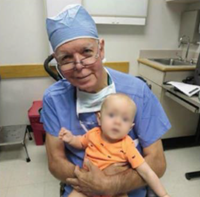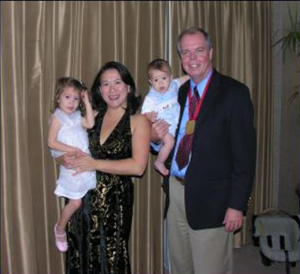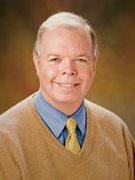Robert M. Campbell, Jr, MD
Born on May 7th, 1951, Dr. Robert Campbell was raised in Nashville, Tennessee, graduating from Father Ryan High School in 1969. He started at Vanderbilt University, where he played football, then transferred to John’s Hopkins, graduating with a BS in Natural Sciences in 1973. After graduating from Georgetown Medical School in 1977, he did a surgical internship at Tripler Army Medical Center in Honolulu, and then an orthopedic residency at Fitzsimmons Army Medical Center in Aurora, Colorado. He did four years of military service, and then completed a pediatric orthopedic fellowship at A.I. DuPont Hospital with G. Dean McEwen.
Dr. Campbell began his career at Christus Santa Rosa Children’s Hospital / UT San Antonio in 1986. One year later, Bob was asked to evaluate an 8-month-old ventilation-dependent child with scoliosis and chest wall abnormalities and deformity. He fashioned Steinmann pins into a substitute chest wall; this allowed the child to be weaned from the ventilator and discharged from the PICU. This led to the development with Mel Smith, his pediatric surgeon collaborator, of the Vertical Expandable Prosthetic Titanium Rib (VEPTR). In 1989, he replaced those Steinmann pins with the new device, and began the process of extending, or saving, the lives of children with previously untreatable conditions. From the start he critically reviewed the results of his surgeries. Dr. Campbell described the characteristics of thoracic insufficiency in a classic JBJS article in 2003. The novel thought in these deformities of evaluating the entire chest, and not just focusing on the spine, to try to preserve or improve pulmonary function will be his legacy.

Dr. Campbell with a patient
He became a tenured professor at UT San Antonio and held the President’s Council/Dielmann Chair in pediatric orthopedic surgery. In 2008, he was recruited to Children’s Hospital of Philadelphia to lead their multidisciplinary thoracic insufficiency program. In 2009, he launched CHOP’s Center for Thoracic Insufficiency. Dr. Campbell traveled worldwide to train surgeons on the indications and techniques of VEPTR surgery to treat thoracic insufficiency. VEPTR surgery has now been performed in more than 25 countries.
Dr. Campbell had fought for many years to gain regulatory approval of the VEPTR device and was granted Humanitarian Use Authorization in the US in 2004. He leveraged his relationships at the FDA to help foster multiple other devices through the FDA’s dense regulatory process. He lobbied Congress on behalf of children with rare disorders and in 2010 Congress passed Resolution 1499 honoring his achievements to provide children with lifesaving medical care. He was named by the FDA as one of the 30 heroes of the FDA. Dr. Campbell made frequent trips to the FDA headquarters to advise and educate. In recent years, the regulatory process for children’s devices has become much more reasonable, allowing the development and approval of new implants, in large part due to the work and influence of Dr. Campbell.
He received recognition, winning multiple awards: POSNA Lifetime Achievement, AAOS Lifetime Achievement, ICEOS Lifetime Achievement, NORD Lifetime Achievement, POSNA Heune award, SRS Blount Humanitarian award, and the Johns Hopkins University Distinguished Alumni award. Dr Campbell held 6 U.S. patents.
Dr. Campbell’s family was extremely important to him. His wife, Corey, and children Abagail, Noah, and three sons from a previous marriage, Ryan, Sean, and Jake.

His advice to younger generations was “Don’t be afraid to take a chance. It takes someone who can start a marathon without a finish line. If it’s for a child, it’s worth it. Don’t’ be afraid, you can succeed.”
Dr. Campbell passed away July 29th, 2018, at the age of 67.
Biography written by Dr. Jay Shapiro, on behalf of the Hall of Fame Committee. 2022.

